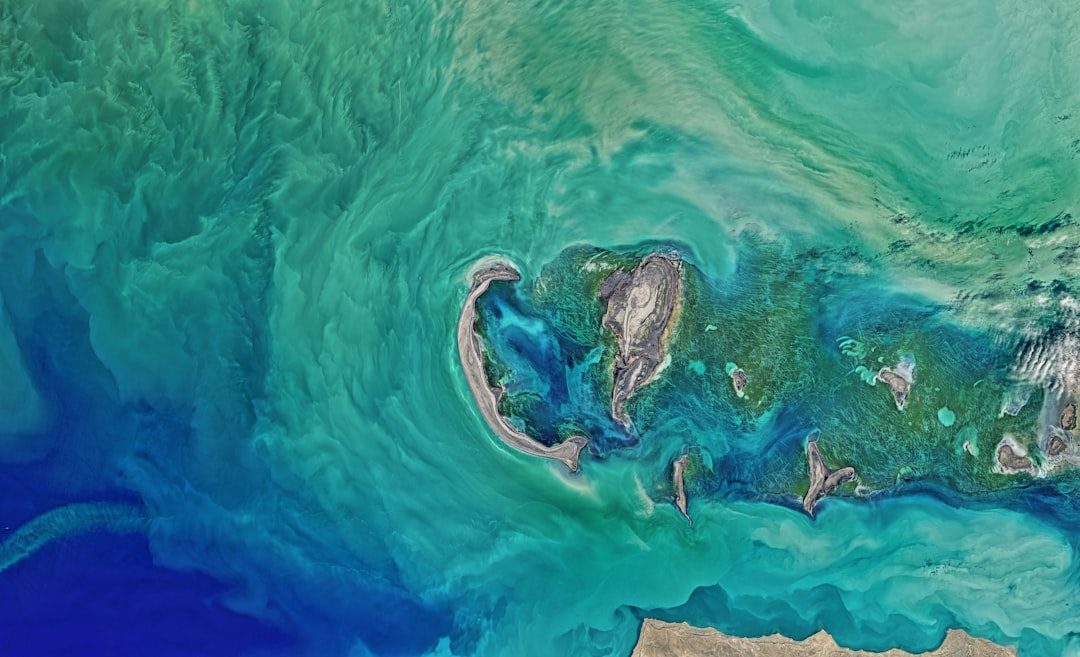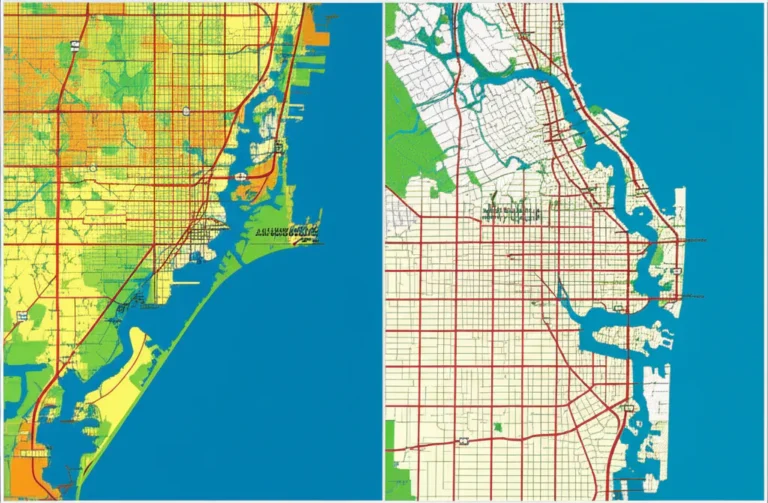Support our educational content for free when you purchase through links on our site. Learn more
Discover the 10 Largest Cities in the U.S. by Land Area 🌆
Have you ever wondered which cities in the United States stretch the furthest across the map? While many people think of population density or cultural significance when considering a city’s importance, the sheer land area can tell a different story. In this article, we dive into the 10 largest cities by land area, revealing not just their sizes but also the unique characteristics that make each one special. For instance, did you know that Jacksonville, Florida, is so expansive that it could fit several smaller cities within its borders?
Join us as we explore the vast landscapes, cultural diversity, and urban planning strategies that define these cities. Whether you’re a geography buff, a potential mover, or just curious about the sprawling urban jungles of America, this guide will provide you with fascinating insights and recommendations!
Key Takeaways
- Jacksonville, Florida, is the largest city in the U.S. by land area, covering approximately 874 square miles.
- The top 10 largest cities include diverse locations like Anchorage, Alaska, and Houston, Texas.
- Understanding land area is crucial for grasping the economic and cultural implications of urban development.
- Cities with larger land areas often face unique infrastructure challenges but also offer more recreational opportunities.
- Explore more about urban planning and how it shapes the cities we live in!
For those interested in urban planning or city living, check out our recommended books on urban development to dive deeper into this fascinating subject!
Table of Contents
- Quick Tips and Facts
- Understanding Land Area: What Does It Mean?
- A Brief History of City Sizes in the U.S.
- Top 10 Largest Cities in the U.S. by Land Area
- Exploring the Geography of the Largest Cities
- Why Land Area Matters: Economic and Cultural Implications
- The Role of Urban Planning in City Expansion
- Fun Facts About the Largest Cities
- Comparative Analysis: Land Area vs. Population
- Gallery of the Largest Cities
- Explanatory Notes on Measurement Techniques
- Conclusion
- Recommended Links
- FAQ
- Reference Links
Quick Tips and Facts
- Largest City by Land Area: Jacksonville, Florida, holds the title of the largest city in the U.S. by land area, covering approximately 874 square miles! 🌆
- Top 10 Cities by Area: The top contenders include cities like Anchorage, Alaska, and Anaconda, Montana, which are also known for their vast expanses.
- Population vs. Land Area: While a city may be large in land area, it doesn’t necessarily mean it has a high population density. For example, Jacksonville has a lower density compared to cities like San Francisco.
- Geographical Features: Many of these large cities feature unique geographical elements, such as rivers, lakes, and parks, contributing to their overall size.
- Urban Planning: The way cities are planned and developed significantly impacts their land area, with some cities merging with surrounding areas to expand.
Understanding Land Area: What Does It Mean?
When we talk about a city’s land area, we’re referring to the total space it occupies, including both land and water bodies. This measurement can be a bit tricky, as many coastal cities appear larger when water is included in the total area. For instance, San Francisco has a total area of 232 square miles, but nearly 80% of that is water! 🌊
Key Points to Consider:
- Total Area vs. Land Area: Total area includes water bodies, while land area is strictly the land portion.
- Municipal Mergers: Some cities have expanded their land area through mergers with surrounding counties, which can inflate their size significantly.
- Independent Cities: Cities that are not part of any county are classified as independent cities, which can also affect size rankings.
A Brief History of City Sizes in the U.S.

The history of city sizes in the U.S. is fascinating! Cities have grown and shrunk over the years due to various factors, including economic opportunities, migration, and urban planning.
Historical Insights:
- Early Growth: Many cities expanded rapidly during the industrial revolution, leading to larger urban areas.
- Consolidation Trends: The trend of city-county consolidation has been prevalent since the mid-20th century, allowing cities like Jacksonville to grow significantly.
- Modern Developments: Today, urban sprawl is a common phenomenon, with cities expanding outward rather than upward.
Top 10 Largest Cities in the U.S. by Land Area
Here’s a quick look at the top 10 largest cities in the U.S. by land area, based on the latest data:
| Rank | City | State | Land Area (sq mi) |
|---|---|---|---|
| 1 | Jacksonville | Florida | 874 |
| 2 | Anchorage | Alaska | 1,946 |
| 3 | Anaconda | Montana | 736 |
| 4 | Butte-Silver Bow | Montana | 716 |
| 5 | Oklahoma City | Oklahoma | 620 |
| 6 | Houston | Texas | 599 |
| 7 | Phoenix | Arizona | 517 |
| 8 | Nashville | Tennessee | 475 |
| 9 | San Antonio | Texas | 465 |
| 10 | Indianapolis | Indiana | 368 |
Fun Fact:
Did you know that Jacksonville is so large that it can fit several smaller cities within its borders? It’s like a mini-state all on its own! 😄
Exploring the Geography of the Largest Cities
The geography of these large cities plays a crucial role in their development and expansion.
Key Geographical Features:
- Rivers and Lakes: Many of these cities are located near significant water bodies, which can enhance their appeal and accessibility.
- Parks and Green Spaces: Cities like Jacksonville boast numerous parks, which contribute to the overall land area and provide recreational spaces for residents.
- Urban vs. Rural: The balance between urban development and rural areas can significantly affect a city’s land area.
Why Land Area Matters: Economic and Cultural Implications
Understanding a city’s land area isn’t just about numbers; it has real-world implications for the economy and culture.
Economic Insights:
- Real Estate Development: Larger land areas can lead to more opportunities for real estate development, which can boost local economies.
- Infrastructure Needs: Cities with vast land areas often face unique challenges in infrastructure development, such as transportation and public services.
Cultural Perspectives:
- Community Dynamics: The size of a city can influence community dynamics, with larger cities often having more diverse populations and cultural offerings.
- Urban Identity: A city’s identity can be shaped by its land area, with sprawling cities like Jacksonville fostering a different culture compared to denser cities like New York.
The Role of Urban Planning in City Expansion
Urban planning is essential for managing the growth of large cities. Effective planning can lead to sustainable development and improved quality of life for residents.
Urban Planning Strategies:
- Zoning Laws: These laws dictate how land can be used, impacting everything from residential areas to commercial developments.
- Public Transportation: Investing in public transportation can help manage the challenges of a sprawling city, reducing traffic congestion and improving accessibility.
- Sustainability Initiatives: Many cities are now focusing on sustainable practices to ensure long-term viability and environmental health.
Fun Facts About the Largest Cities
Here are some quirky and interesting facts about the largest cities in the U.S. by land area:
- Jacksonville is so large that it has its own zoo, museums, and even a professional football team, the Jacksonville Jaguars! 🐆
- Anchorage has more coastline than the entire U.S. West Coast combined! Talk about a beach day! 🏖️
- Oklahoma City is home to the world’s first and only professional rodeo hall of fame! 🤠
Comparative Analysis: Land Area vs. Population
While land area is impressive, it’s essential to compare it with population figures to understand the dynamics of these cities better.
| City | Land Area (sq mi) | Population (2020) | Population Density (per sq mi) |
|---|---|---|---|
| Jacksonville | 874 | 911,507 | 1,041 |
| Anchorage | 1,946 | 291,247 | 149 |
| Houston | 599 | 2,304,580 | 3,843 |
| San Francisco | 232 | 883,305 | 38,000 |
Key Takeaways:
- Density Matters: Cities like San Francisco have high population densities, while Jacksonville has a lower density despite its size.
- Urban Sprawl: Larger land areas can lead to urban sprawl, which may impact community cohesion and infrastructure.
Gallery of the Largest Cities
While we can’t show you images, imagine the vast landscapes of Jacksonville with its sprawling parks, the rugged beauty of Anchorage, and the bustling streets of Houston! Each city has its unique charm and character that reflects its size and geography.
Explanatory Notes on Measurement Techniques
Measuring land area can be complex, and various techniques are used to ensure accuracy:
- GIS Technology: Geographic Information Systems (GIS) are often employed to map and measure land areas accurately.
- Census Data: The U.S. Census Bureau provides comprehensive data on city sizes, including land and water areas.
- Satellite Imagery: Modern technology allows for precise measurements using satellite imagery, making it easier to track changes over time.
Conclusion

Understanding the largest cities in the U.S. by land area offers fascinating insights into urban development, geography, and community dynamics. From Jacksonville‘s sprawling parks to Anchorage‘s breathtaking landscapes, each city tells a unique story through its size and structure.
For more intriguing facts about Jacksonville and its history, check out our articles on Jacksonville History and Jacksonville Geography.
Recommended Links
- Is Jacksonville the Biggest City Land Wise?
- Jacksonville Facts
- Jacksonville Education
- Jacksonville Demographics
FAQ

-
What city is the largest in the U.S. by land area?
Jacksonville, Florida, is the largest city by land area in the U.S. -
How is land area measured?
Land area is measured using GIS technology, census data, and satellite imagery. -
Does a larger land area mean a higher population?
Not necessarily! Some cities have large land areas but lower population densities.
Reference Links
- Wikipedia: List of United States Cities by Area
- How Stuff Works: Biggest Cities in the U.S.
- World Population Review: Largest Cities in the U.S. by Area
And there you have it! We hope you enjoyed this deep dive into the largest cities in the U.S. by land area. If you have any questions or want to share your thoughts, drop a comment below! 😊
Conclusion

In summary, exploring the largest cities in the U.S. by land area reveals a fascinating tapestry of geography, culture, and urban planning. Jacksonville, Florida, stands out not only as the largest city by land area but also as a unique blend of urban and natural landscapes. With its sprawling parks, diverse neighborhoods, and rich history, Jacksonville offers a lifestyle that is both vibrant and expansive.
Key Takeaways:
- Positives: Jacksonville’s vast land area allows for extensive recreational spaces, a variety of housing options, and a unique blend of urban and suburban living. It also provides opportunities for economic growth and development.
- Negatives: However, the challenges of managing such a large area include infrastructure demands, traffic congestion, and maintaining community cohesion.
We confidently recommend considering Jacksonville for anyone looking to experience a city that combines the charm of Southern living with the amenities of a larger urban environment. Whether you’re a resident, a visitor, or someone looking to start a business, Jacksonville has a lot to offer! 🌟
Recommended Links
- 👉 Shop Books on Urban Planning:
FAQ

What are the top 10 largest cities in the US by land area and how does Jacksonville rank among them?
The top 10 largest cities in the U.S. by land area are:
- Jacksonville, Florida – 874 sq mi
- Anchorage, Alaska – 1,946 sq mi
- Anaconda, Montana – 736 sq mi
- Butte-Silver Bow, Montana – 716 sq mi
- Oklahoma City, Oklahoma – 620 sq mi
- Houston, Texas – 599 sq mi
- Phoenix, Arizona – 517 sq mi
- Nashville, Tennessee – 475 sq mi
- San Antonio, Texas – 465 sq mi
- Indianapolis, Indiana – 368 sq mi
Jacksonville ranks first among these cities, making it a significant player in terms of land area. Its size allows for a diverse range of neighborhoods and ample green spaces, contributing to its unique character.
How does Jacksonville’s land area compare to other major cities in Florida, such as Miami and Tampa?
Jacksonville’s land area is significantly larger than other major Florida cities. For comparison:
- Miami covers approximately 56 sq mi.
- Tampa spans about 175 sq mi.
This stark difference highlights Jacksonville’s unique status as a sprawling urban center, allowing for more extensive development and recreational opportunities compared to its Florida counterparts.
What are the benefits and challenges of being one of the largest cities in the US by land area, as experienced by Jacksonville?
Benefits:
- Diverse Communities: Jacksonville’s large land area accommodates a variety of neighborhoods, each with its own character and amenities.
- Recreational Spaces: The city boasts numerous parks and outdoor activities, enhancing the quality of life for residents.
- Economic Opportunities: The expansive area allows for significant commercial and residential development, attracting businesses and residents alike.
Challenges:
- Infrastructure Strain: Managing transportation and public services across such a large area can be complex and costly.
- Traffic Congestion: With a sprawling layout, traffic can become an issue, particularly during peak hours.
- Community Cohesion: Maintaining a sense of community can be challenging in a city of such size, leading to potential social fragmentation.
Does Jacksonville’s large land area contribute to its appeal as a tourist destination and a place to live, work, and start a business?
Absolutely! Jacksonville’s extensive land area offers a wealth of attractions, from beautiful beaches to cultural institutions and outdoor activities. This diversity makes it an appealing destination for tourists and a desirable place for residents.
- Tourism: The city’s beaches, parks, and events draw visitors year-round, contributing to its economy.
- Living and Working: The availability of space allows for a variety of housing options and business opportunities, making it attractive for families and entrepreneurs alike.
Jacksonville’s unique blend of urban and natural environments, coupled with its vast land area, creates a compelling case for anyone considering a visit or a move. 🌴
Reference Links
- Wikipedia: List of United States Cities by Area
- How Stuff Works: Biggest Cities in the U.S.
- World Population Review: Largest Cities in the United States by Area
- U.S. Census Bureau – For comprehensive data on city sizes and demographics.
By exploring these resources, you can gain deeper insights into the fascinating world of urban geography and city planning!




